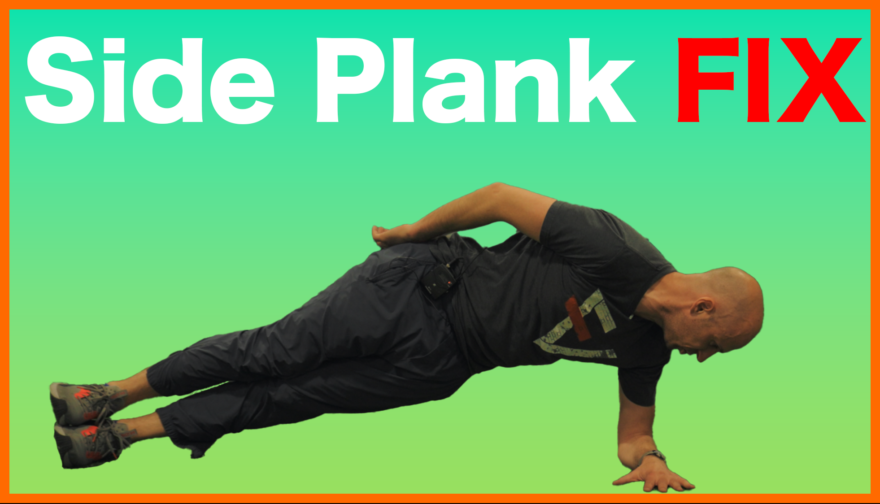Table of Contents
Think side planks are easy? THINK AGAIN
Side planks. People stop this awesome exercise too early because they either become “easy” or they end up causing elbow discomfort.
What if you could solve both of these issues by beefing up your technique?
Don’t worry, you’ll be learning the finer technical side plank points that most people are missing, as well as when to best program this vastly underutilized exercise.
Check out the post and video below to learn how.
Side plank biomechanics
To know where the side plank can improve motion, we have to look at the starting conditions.
Let’s suppose we are performing a left-sided side plank (Yikes, more sides than Thanksgiving with that one).
We have two interesting things happening when we are in sidelying.
First, according to this study, the sidelying position increases the anteroposterior dimensions of the ribcage.
Second, gravity is going to be pushing airflow and the abdominal contents downward.
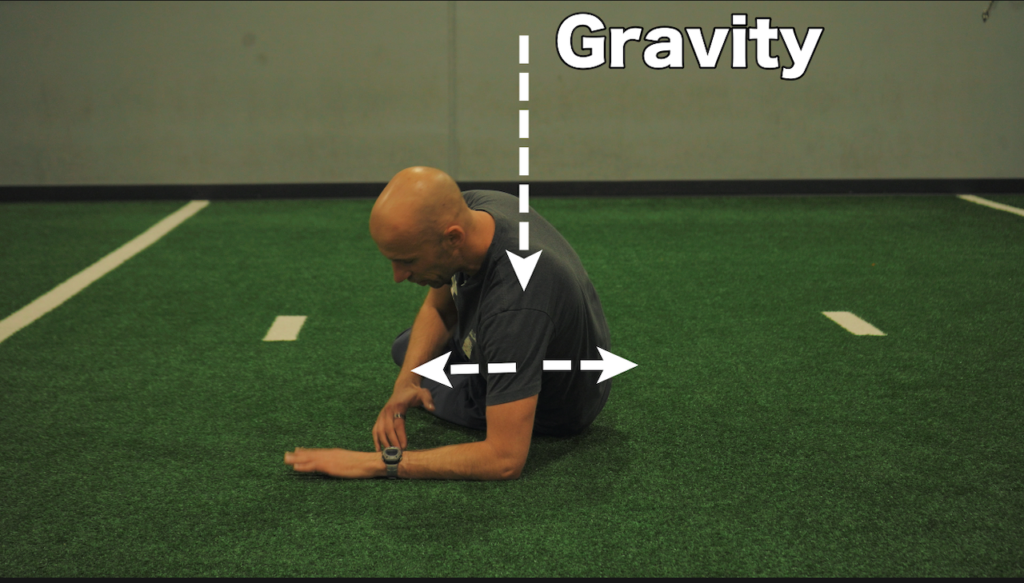
These two actions expand the ventral cavity (thorax, abdomen, and pelvis) anteriorly and posteriorly.
Personally, I coach the side plank with a heavy rotational bias (as you’ll learn below). So in the above example, we’ll create greater leftward rotation in this specific variation.
Because I am rotating towards the left (the bottom side), this will shift the expansion bias a bit more posteriorly.
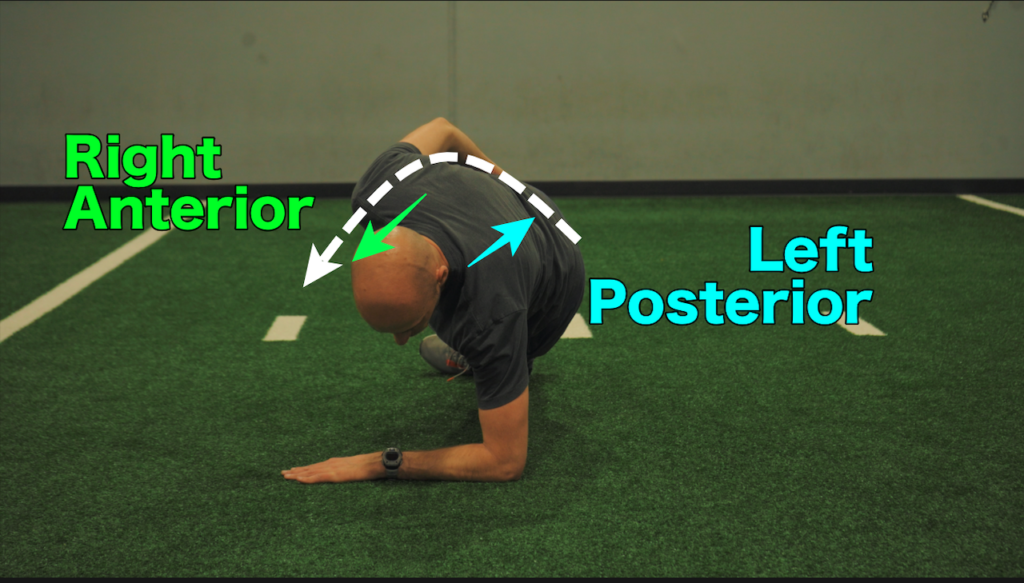
Now here’s an interesting thing that helps with posterior expansion even more so.
The answer: The elbow.
Typically, forearm pronation creates extremity internal rotation. Whereas supination creates extremity external rotation.
The one exception however is at 90º of elbow flexion, which we see in the side plank. At 90º, the rotational actions flip flop. Here, pronation is paired with external rotation, and supination is paired with internal rotation.
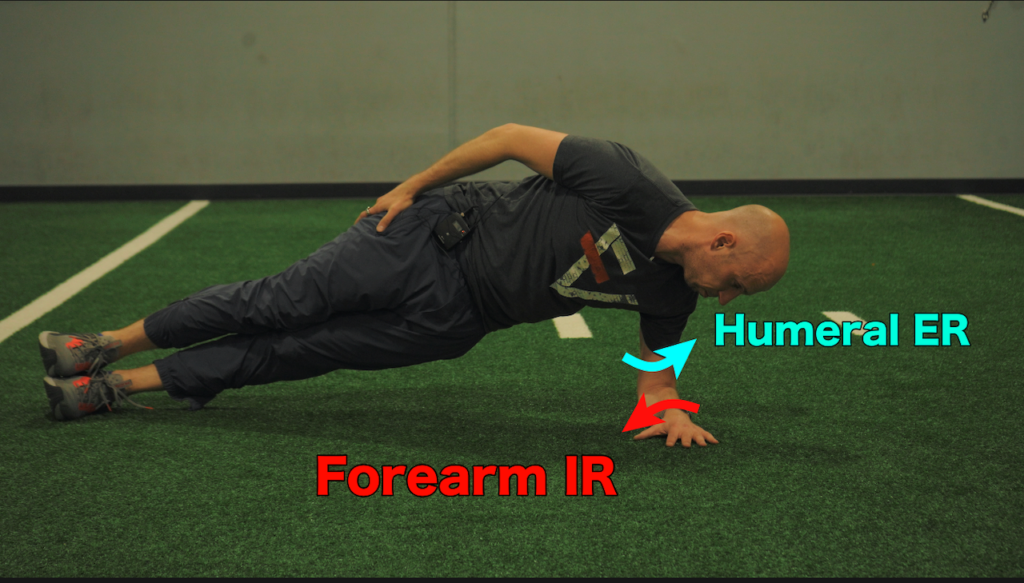
Since we will be driving pronation with the side plank, this will externally rotate the distal humerus, further solidifying the posterior expansion.
To summarize the biomechanics, here’s what we will get with a side plank:
- Groundside anteroposterior expansion
- Slight posterior expansion bias (which increases extremity external rotation)
- Distal humerus external rotation
Side plank coaching cues
Here are the major keys that I focus on when coaching any side plank variation:
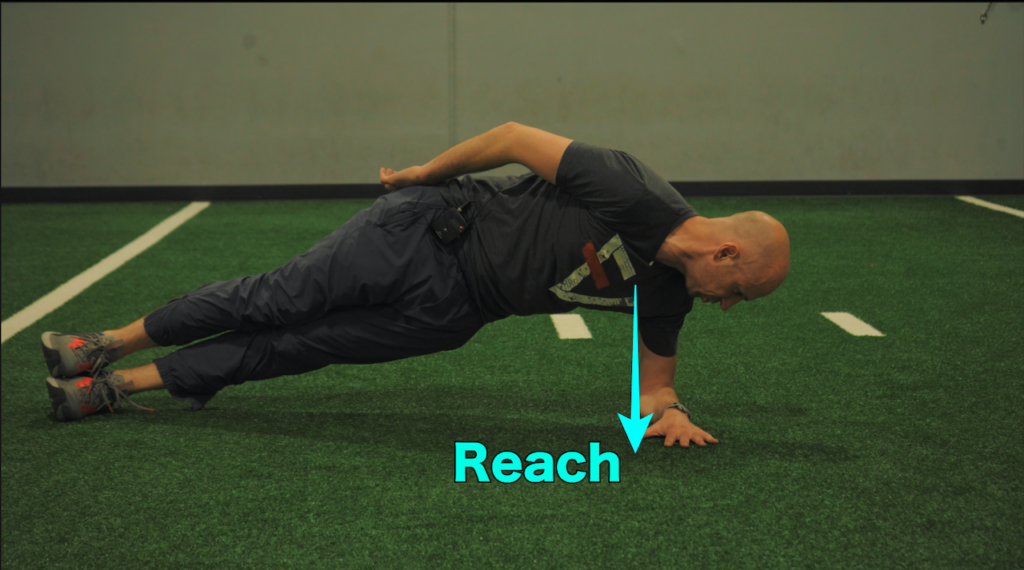
- Pivot off of the hand and elbow
- Create a catapult arc with the body (up and forward)
- Support arm parallel with chest
- Reach arm long without crunching
- BREATHE!
If you’ve ever had someone complain of elbow pressure on the side plank, adding the rotational elements described above significantly reduces these issues.
Common side plank errors
Sadly, as you can imagine, most people screw…this…up.
Here are the most common side plank errors I see (and how to fix them)
One of the first ones I see is is excessive humeral abduction. This often happens if a person cannot create the external rotation needed for posterior expansion in the thorax
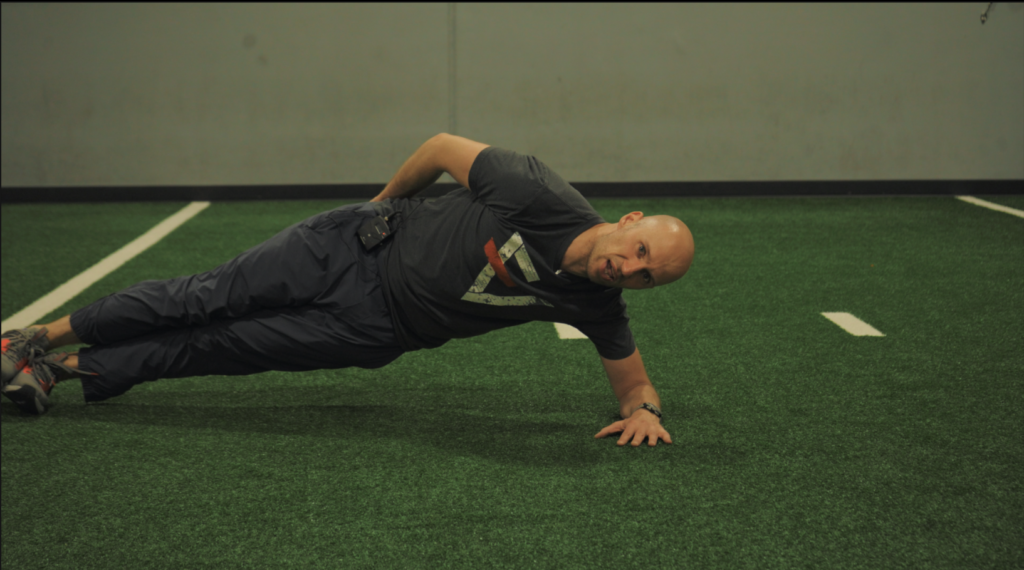
You might even see the fam externally rotate the humerus at the start:
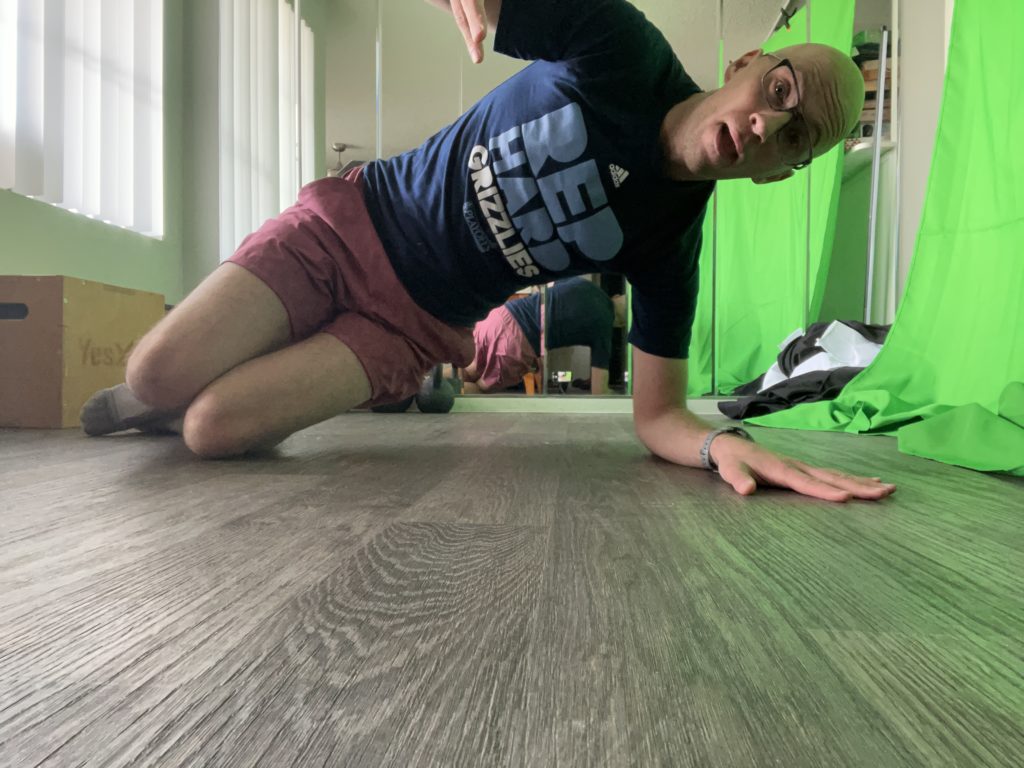
Usually just calling awareness to these cheats ends up fixing them.
I wish I could say the same for all the ways peeps struggle keeping the chest parallel to the ground.
Either peeps will limit the degree they reach, sagging the torso:
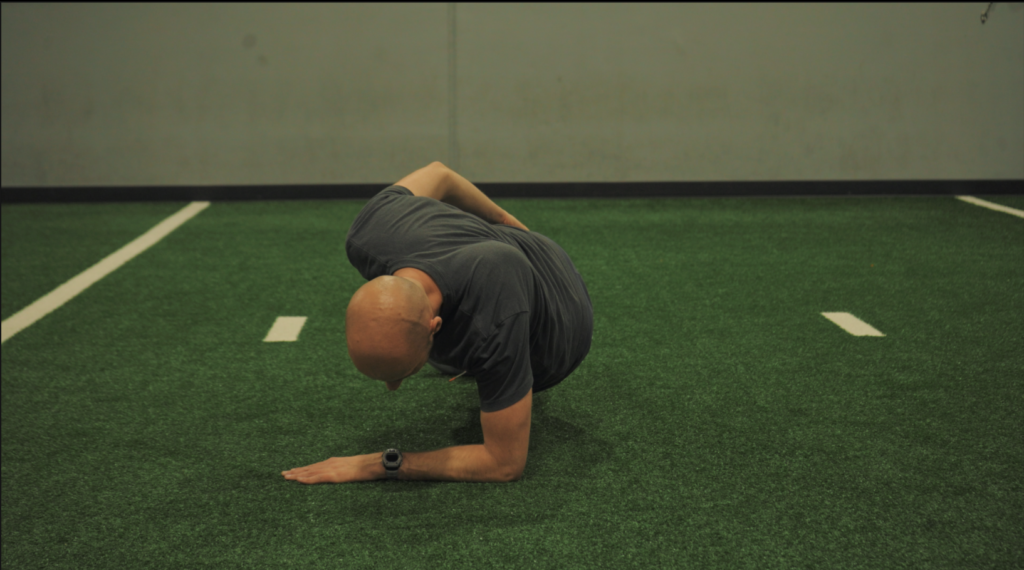
Or you’ll see peeps crunching to stay up in the movement:
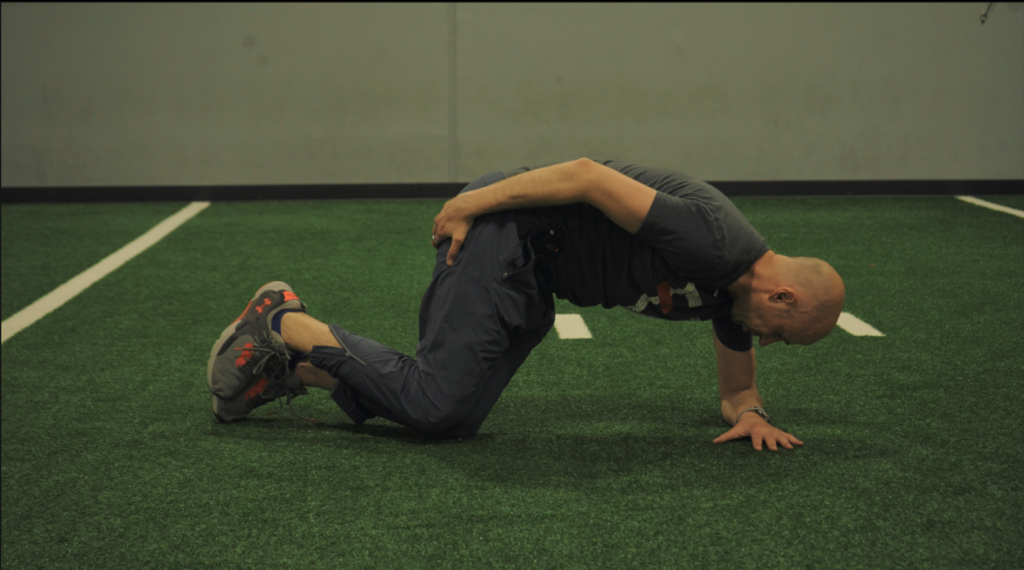
Both of these actions occur because your supreme clientele sturggle with oblique recruitment in this position and difficulty creating the expansion needed in the postion.
The sag will happen with a posterior expansion deficit, and the crunch will happen if you can’t meet the internal rotation demands of the move.
For both of these faults, you’ll want to cue the following:
- Reach arm long, pushing chest away from ground
- Keep the chest parallel to the forearm without bending
Side plank variations
If the classic side plank is struggle buss, you can work along the following progression to build up to it.
I start most people with a short lever side plank. The shorter leg position makes is easier to execute, allowing one to pivot off the knees as well:
From here, you can straighten one leg to up the difficulty:
If you are ready for legs extended but the classic side plank is still hella tough, then I would put the top leg in front of the body. This action increases the base of support compared to a classic side plank, making it easier.
Sum up
Those are the major keys you need to kick up your side planks to the next level.
To summarize:
- Side planks bias ground-side anteroposterior expansion (slight posterior bias) and distal humerus external rotation
- Side planks should be rotational in nature
- Pivot off the hand, chest parallel, reach arms long
- Play with leg position to reduce the difficulty
What difficulties have you had with the side plank? Comment below and I’ll help ya out!
